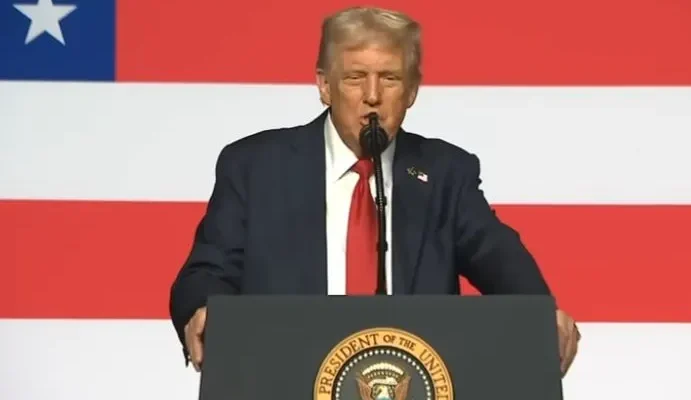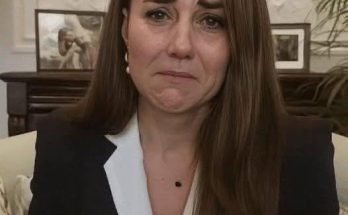Donald Trump has said he underwent an MRI during a recent follow-up medical evaluation at Walter Reed National Military Medical Center but offered no further explanation for why the scan was performed, as the White House physician declared that the 79-year-old remains in “exceptional health.” The combination of a scheduled return to Walter Reed and the reference to advanced imaging reignited online speculation about the president’s health, but officials reiterated that the appointment formed part of a routine programme of care and did not represent an unplanned hospital admission. “Trump remains in exceptional health, exhibiting strong cardiovascular, pulmonary, neurological, and physical performance,” Navy Capt. Sean Barbabella, the physician to the president, wrote in an 11 October memo following the visit.
The October evaluation came six months after Trump’s annual physical in April and three months after the White House put a name to a condition that had drawn public attention over the summer: chronic venous insufficiency, a common age-related vein issue that can cause swelling in the lower legs. At the time, the White House said swelling observed around the ankles and a bruise on Trump’s right hand were benign findings, with tests ruling out deep vein thrombosis, arterial disease and heart failure. Those points were reiterated in October as images of the president’s ankles and the disclosure of additional imaging prompted renewed questions from commentators and political opponents.
Trump, who travelled to Walter Reed on 10 October, framed the appointment as a follow-up to his spring exam and later told reporters he “got an MRI” as part of the day’s testing. The physician’s memo described “advanced imaging,” laboratory tests and preventive health measures, including seasonal vaccinations, but did not specify the body region scanned or the clinical indication. In remarks reported on 27 October, Trump volunteered that the MRI result was “perfect,” declining to elaborate further and directing additional questions to his medical team. The White House did not release raw imaging reports or a line-by-line test panel, sticking instead to the summary letter that emphasised overall fitness.
In releasing the October summary, Barbabella used language closely aligned with earlier communications, describing the evaluation as a “scheduled follow-up” and part of an “ongoing health maintenance plan.” The White House characterised the appointment as routine, noting its timing ahead of foreign travel. Major outlets that obtained or reviewed the physician’s letter reported the “exceptional health” assessment without contradiction, while also noting the unusual optics of a second Walter Reed visit within six months, given that presidents typically undergo a single formal annual physical. Trump’s team countered that the follow-up was prudent given his age and workload.
The July decision to publish a specific diagnosis—chronic venous insufficiency—marked a rare instance of the White House naming an ongoing condition rather than relying on generalities about wellness. Medical explainers that followed the announcement described the disorder as a failure of leg vein valves to return blood efficiently to the heart, often managed with compression and elevation and not synonymous with clotting disorders or cardiac disease. The administration said vascular studies had ruled out more serious pathology and that the president’s cardiovascular testing, including an echocardiogram, was normal. Against that baseline, the fall follow-up was presented as maintenance, with the MRI one component of a preventive and diagnostic bundle rather than a response to a discrete event.
Barbabella’s October letter repeated the finding that Trump’s overall health is “exceptional,” a superlative he had used in April when he reported normal cardiac rhythm and no major health problems after the annual physical. Some coverage noted an eye-catching detail in the October summary that placed Trump’s “cardiovascular age” well below his chronological age, an estimate derived from composite risk factors such as blood pressure, cholesterol, body weight and exercise profile. The White House did not provide the underlying calculator inputs or the equations used, but the broader point—that standard cardiovascular markers were favourable—was presented as evidence that the president met the demands of office from a medical standpoint.
Across the summer and into the autumn, the most visible cues fuelling speculation were the swelling at the ankles and a discolouration on Trump’s right hand. Spokespeople linked the bruise to frequent handshakes and daily low-dose aspirin use and said that makeup occasionally deployed for television lighting had made the mark appear more prominent in photographs. The venous diagnosis accounted for the lower-leg swelling, and the administration paired those explanations with assurances that his laboratory values and imaging had detected no systemic disease. The October summary reiterated that posture, and independent reporting that day made no mention of any acute finding requiring inpatient care.
Trump’s reference to an MRI, while unusual in its specificity, did not alter the official stance that the October appointment was scheduled. Wire services and national newspapers framed the remark as a fresh detail rather than a departure, underscoring that neither the president nor his doctor had identified a new diagnosis. In the absence of formal detail, outside clinicians canvassed by media outlets recited a broad list of reasons an older adult might undergo MR imaging—ranging from musculoskeletal assessment to neurological screening—while cautioning that such a list is not evidence of any one condition. The White House declined to engage those hypotheticals.
Trump has leaned into public disclosures when it suits a political argument—most notably by touting cognitive screening results in past cycles—but has otherwise kept health releases to structured letters from his physicians. The cadence this year has been consistent with that habit: a comprehensive spring exam, a mid-summer clarification to explain a visible sign, and an autumn follow-up summarised in a one-page note. Supporters have echoed the “exceptional health” language to argue that the president’s age should be a secondary consideration, while critics have pressed for more granularity. The administration’s response has been to point to what it has already put on paper and to insist that routine care is being depicted as crisis for political ends.
Questions about transparency are not new in modern presidencies, and they often sharpen when leaders deviate from the typical single annual physical. In Trump’s case, the return to Walter Reed six months after his April exam drew comment precisely because it invited comparison with that norm, even as his physician called the visit a planned follow-up. It also coincided with lingering public curiosity about the venous diagnosis, which is both commonplace and visually noticeable, and the bruise on his hand, which reappeared in campaign photographs and was amplified on social media. The October letter’s inclusion of preventive measures, including seasonal vaccinations, reflected an effort to anchor the day in standard senior care.
The messaging from the president himself has been characteristically direct. He has dismissed talk of serious illness as baseless, pointed back to his physician’s letters, and asserted that he feels “healthier than ever.” By acknowledging an MRI without giving its rationale, he struck a balance that satisfied neither those calling for exhaustive transparency nor those inclined to ignore health as a political variable. The net result is a public record that confirms an imaging test occurred but does not ascribe to it any specific medical concern, alongside a physician’s summary that presents a uniformly positive picture.
For now, the paper trail is straightforward: an April physical that found no major problems; a July disclosure of chronic venous insufficiency to explain ankle swelling and a hand bruise; and an October follow-up at Walter Reed that included “advanced imaging,” laboratory tests and vaccinations, after which the physician declared the president’s health “exceptional.” Trump added the detail that an MRI was performed and declined to say more. In the absence of additional releases from his medical team, claims that he “revealed the real reason” for a hospitalisation are unsupported by the documented record. The facts available—his doctor’s memo, the summer diagnosis, and his single sentence about the MRI—do not, taken together, describe a hospital admission for a disclosed acute illness. They describe routine care and a president who, according to his physician, remains fit for duty.
If further documentation emerges—such as a more detailed letter from Barbabella or a release of selected imaging results—that would change the evidentiary picture. As of today, the administration is standing on the October memo’s language and on the July explanation for the most visible signs that have animated speculation. Without a formal indication from the White House or the physician that the MRI was diagnostic for a new condition, the only verified development is that the scan occurred. Everything else remains conjecture, and the official line remains that the president is in “exceptional health.”



